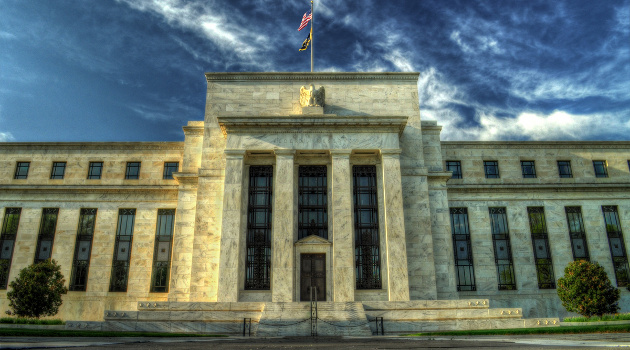During the Obama years, I used data from the Minneapolis Federal Reserve to explain that the economic recovery was rather weak. And when people responded by pointing to a reasonably strong stock market, I expressed concern that easy-money policies might be creating an artificial boom.
I expressed concern that easy-money policies might be creating an artificial boom.
Now that Trump’s in the White House, some policies are changing. On the plus side, we got some better-than-expected tax reform. Moreover, the onslaught of red tape from the Obama years has abated, and we’re even seeing some modest moves to reduce regulation.
But there’s also been bad news. Trump’s bad protectionist rhetoric is now turning into bad policy. And his track record on spending is very discouraging.
What’s hard to pin down, though, is the impact of monetary policy. The Federal Reserve apparently is in the process of slowly unwinding the artificially low interest rates that were part of its easy-money approach. Is this too little, too late? Is it just right? What’s the net effect?
Since economists are lousy forecasters, I don’t pretend to know the answer, but I think we should worry about the legacy impact of all the easy money, which is the point I made in this clip from a recent interview.
James Pethokoukis from the American Enterprise Institute has similar concerns.
Here’s some of what he recently wrote on the topic.
…this supposed “boom” looks more like same-old, same-old. First quarter GDP, for instance, was just revised down two ticks to 2% and monthly job growth
is a bit weaker than under President Obama’s final few years. …What’s more, pretty much every recession for a century has been accompanied by some magnitude of explicit Fed tightening. And, of course, the Fed is now well into a tightening cycle. …Another complicating factor is the Trump trade policy, which seems to be a market suppressant right now, if not yet a significant economic one.
Those are all good points, though we still don’t know the answer.
I’ll close with two observations.
- First, our main concern should be boosting the economy’s long-run growth rate, and that’s why we need lower tax rates, less government spending, open trade, and less red tape. As I’ve noted already, Trump has a mixed track record.
- Second, a short-run concern is whether the Federal Reserve’s easy-money policy in recent years has created a bubble that is poised to burst. If it does, Trump will take the blame simply because he happens to be in the White House.
And that second issue gives me an excuse to re-emphasize that Keynesian monetary policy is just as foolish as Keynesian fiscal policy. You may enjoy a “sugar high” for a period of time, but eventually there’s a painful reckoning.
P.S. For what it’s worth, we’d have more growth and stability if policymakers learned from the “Austrian School” of economics.
P.P.S. Moreover, it’s a good idea to be skeptical about the Federal Reserve.

